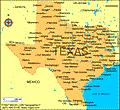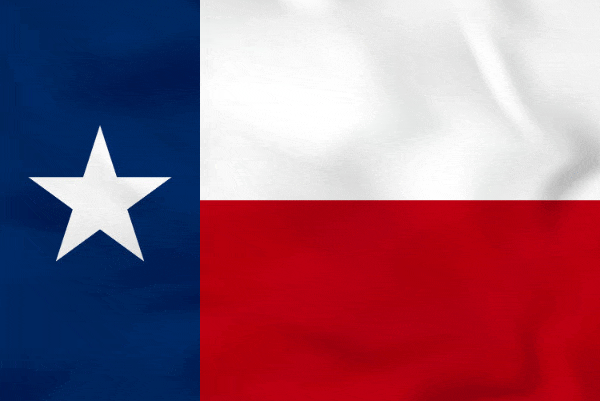Read this profile of Texas to learn about the state's history, points of interest, and government. Also find interesting facts about each state, including the state's motto, symbols, and when it entered the union.
 History Spanish explorers, including Álvar Núñez Cabeza de Vaca and Francisco Vásquez de Coronado, were the first to visit the region in the 16th and 17th centuries, settling at Ysleta near El Paso in 1682. In 1685, Robert Cavelier, Sieur de la Salle, established a short-lived French colony at Matagorda Bay. Americans, led by Stephen F. Austin, began to settle along the Brazos River in 1821 when Texas was controlled by Mexico, recently independent from Spain. In 1836, following a brief war between the American settlers in Texas and the Mexican government, the Independent Republic of Texas was proclaimed with Sam Houston as president. This war was famous for the battles of the Alamo and San Jacinto. After Texas became a state in 1845, border disputes led to the Mexican War of 1846–1848. Possessing enormous natural resources, Texas is a major agricultural state and an industrial giant. Second only to Alaska in land area, it leads all other states in such categories as oil, cattle, sheep, and cotton. Texas ranches and farms also produce poultry and eggs, dairy products, greenhouse and nursery products, wheat, hay, rice, sugar cane, and peanuts, and a variety of fruits and vegetables. Sulfur, salt, helium, asphalt, graphite, bromine, natural gas, cement, and clays are among the state's valuable resources. Chemicals, oil refining, food processing, machinery, and transportation equipment are among the major Texas manufacturing industries. Millions of tourists spend well over $44 billion annually visiting more than 100 state parks, recreation areas, and points of interest such as the Gulf Coast resort area, the Lyndon B. Johnson Space Center in Houston, the Alamo in San Antonio, the state capital in Austin, and the Big Bend and Guadalupe Mountains National Park.
|





